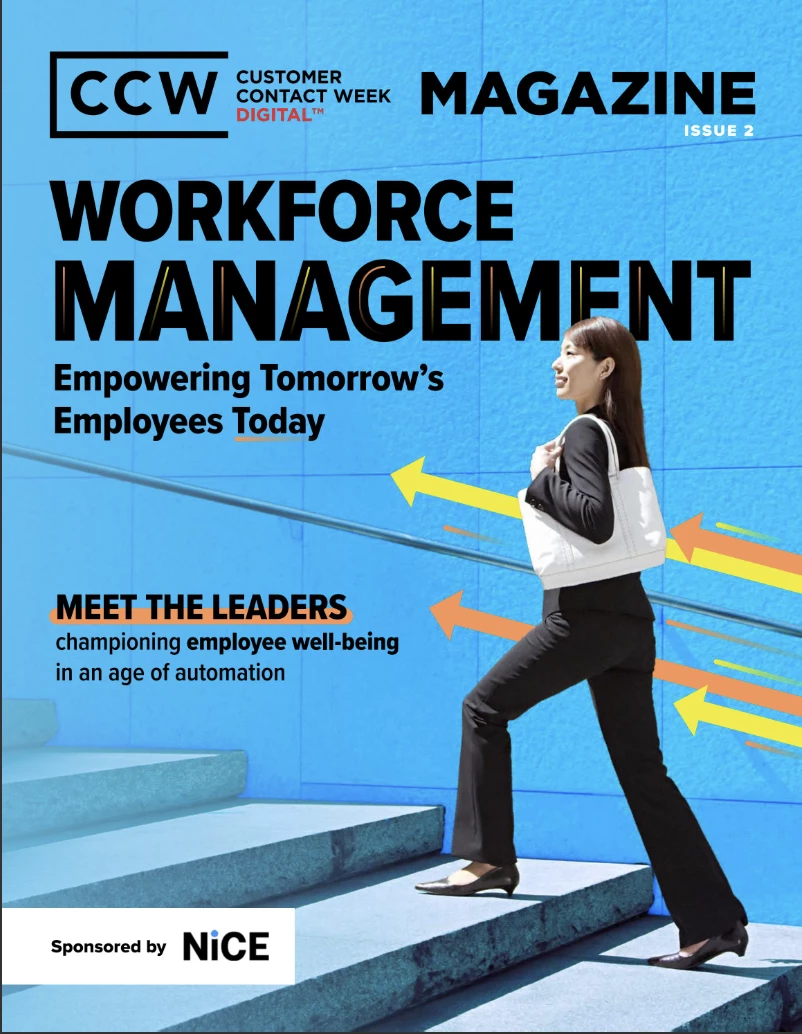Reassessing Remote Work in the Wake of Amazon’s RTO Mandate
For leaders who are still operating their businesses under short-term, remote or hybrid protocols following the COVID-19 pandemic, the time has come to invest in and commit to long term plans for the future of work.
Add bookmark
Business leaders of all kinds often look to the CEOs of giant companies like Amazon and Google for direction in how to navigate challenging times. These companies, among several other Fortune 100 firms, have mandated a return to in-person work, with limited recourses for opting out.
Remote work remains a polarizing topic for managers, and Amazon’s move to a 5-day in-person work week is certainly a bold one. This may signal the end of the age of remote work: if it’s not working for a company as profitable as Amazon, why would it work for anyone else?
In making decisions about whether to change your contact center’s policy on working from home versus working in an office, it is imperative that leadership keep their employees' needs top of mind. In the case of Amazon, workers have already emphasized their profound disappointment with the decision.
While we can’t know all of the details that went into this move, we can analyze the different motivations behind such a drastic change and determine if those influences would still be true for much smaller companies. Before following Amazon’s example, leaders should be critical of who the true stakeholders are.
Employees prefer remote and hybrid options
The nature of work is always adapting. The COVID-19 pandemic likely accelerated trends that were already leading to remote work, as the Internet has allowed us to become interconnected and accessible 24/7. Now that workers have had a chance to experience remote work and figure out the working styles and routines that accommodate their lifestyle, it is impossible to truly just “go back” to the way things were before. After such a major shift, employees won’t just forget all of the progress and productivity they experienced in the remote and hybrid settings.
Many of the key benefits of a hybrid workplace also extend well beyond just efficiency gains. For people with disabilities, remote work opportunities can be a lifeline. Remote work supports parents and caregivers tremendously, and offers much needed flexibility to anyone with critical responsibilities during the work day. It also enables people to take ownership of their time outside of work by cutting down on commuting and their downtime during the day.
Opinions on remote work vary considerably, even among those whose lives are ostensibly made easier by working from home, for a variety of reasons. In all cases, the situation at hand places managers and leaders in a difficult position. Mandating employees return to office is not just a logistical change, it predicates the notion that bosses can completely overturn your lifestyle–a lifestyle that has been constructed around hybrid work for the last four years–without your input. To do so without tact and care would be a grave error for managers, and underestimates the collective power of workers when they are not given agency.
Reevaluating remote work policies
As we see more companies return to in-person work, leaders should revisit the framework that has been used to make such decisions in the past. There are plenty of reasons why contact center leaders in particular may be reluctant to go fully remote. 57% of CX leaders feel that training and coaching remotely is a challenge for workers at every level in the contact center. With the upskilling required to adapt entire teams to this new way of working, a return to the familiar is attractive. That said, these leaders should use these key considerations to ensure they are factoring in the long-term implications and risks associated with a change to their policies.
1) The status quo isn’t always the ‘best’ option
One of the more shadowy reasons for the push to return to office is the abundance of office buildings sitting empty in cities. Office leases are generally much longer than residential leases and more legally challenging to break. Not to mention all of the investments organizations like Amazon have made to optimize their offices in recent years. Many companies on hybrid and remote schedules have been in a kind of limbo the last four years: not giving up their office space, but barely using it, with smaller teams coming in for only a few days a week. When faced with the decision to give up the space or return, leaders who are more averse to the unfamiliar are likely to send their employees back to the office without truly considering the alternative.
2) Capture the voice of the employee to gauge reactions
When considering the needs of your employees, it is critical to actually ask your team what is most effective for them. It is imperative to go beyond a survey polling opinions on the current policies. To ensure your workers’ needs are being heard and accommodated, there needs to be continuous and comprehensive listening to employee sentiment. Each employee’s circumstances are different. Even if the majority of workers support more in-office time, by not working with the opposed individuals you stand to lose them.
3) Recognize that any change will incur a loss regardless
Leaders know that a return-to-office mandate will result in some attrition. In fact, in some cases this is one of the goals of such a mandate. Returning to in-person work presents the risk of losing valuable employees to one of the many other companies who have already committed to remote work. Conversely, companies that are able to give up their office space are likely to save a fortune on overhead costs, which can be re-invested in technologies and systems that support collaborative remote work. Companies’ financial situations vary drastically, though, so in cases where the bottom line is truly forcing a return to office, leadership should make that clear to their staff.
Understanding if some of these opportunity costs are worth it to your organization is critical to the decision-making process.
4) Micromanaging is a scourge on good work: RTO won’t fix that
Some of the most vocal opponents of remote work claim that it depletes productivity and allows workers to get away with time theft. Productivity is complex and subjective, and is best measured with pragmatic and personalized goals for agents and teams. Setting arbitrary productivity standards, such as disciplinary action for idle computer time, can lead employees to feel micromanaged. In contact centers, where coaching and training are vital operations, engagement initiatives driven by trust are the best way to ensure employees stay productive without micromanaging them.
In both an in-person and hybrid setting, leaders must work to establish productive performance metrics that inspire employees to meet standards. Rather than use return-to-office to force change, leaders must fix underlying issues first.
5) Transparency is critical
For many workers, it is this “limbo” that spurns confidence in the company’s leadership. After gathering sufficient input from stakeholders, it is on leadership to develop a long term plan for their employees. Such a plan should include a clear timeline of changes, plenty of lead time to adjust lifestyles and routines, and an accessible process for those who will need to request special accommodations. Not providing these courtesies stands to further erode the trust in leadership and make employees feel disposable.
Remote work is never going away
Ultimately, the need to work from home is no longer a fringe case. Our society experiences myriad unpredictabilities, and “surges” of contagious diseases exacerbated by global travel, extreme weather, and an aging population that will require an abundance of caregivers will all demand more flexibility in work than ever before. At the same time, our advanced technology has enabled working from home to be far smoother and more collaborative than even 5 years ago. Rather than focus on the perceived negatives of limited oversight and risk of diminished productivity, managers should consider why they don’t trust their employees to begin with.
To move forward, leaders must do their research and enact a plan that supports the needs of all of their stakeholders. In order to put employees first, there may be a cost. After all, building a culture of true trust and investing in the long term satisfaction of employees has served businesses well through countless other shifts in the nature of work.
Image by fauxels on Pexels.



























